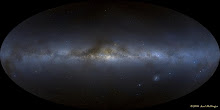 Windows XP at CERN LHC CMS. It's little things like ...please send an error report, that could get us into a lot of trouble. The Compact Muon Solenoid weighs in at 5 jumbo jets with a magnetic field of 4 Teslas at 21,000 amps, the magnet supercooled to -269 degrees C. It's all boggling, the sheer scale and complexity, with 3 other major experiments, each in its own giant cavern and 2 piggyback ones in a monumental 27 km ring tunnel of cryogenics and superconducting magnets for the beam pipes.1700 major interconnections for 1232 dipoles in 15 meter lengths for curving the beams, 400 5-7 meter focusing quadrupoles, another 5,000 corrector magnets. Hundreds of thousands of bolts, 40,000 or 10 km worth of special welds using tungsten gas, 65,000 electrical splices of superconducting cables and a lot of duct tape. For this main ring alone the nominal current is 11,850 amps. Imagine plugging in the CMS toaster for a total draw of 32,850 amps. CERN should be able to do that without knocking out the European Power Grid. But the energy stored in the ring magnets once powered is 10 GJ with 725 MJ in the beam. A small loss is sufficient to quench a superconducting magnet. If somebody turns on their air conditioner in Geneva, the beam could dump 157 kg of TNT equivalent, the ring another 2 metric tonnes.
Windows XP at CERN LHC CMS. It's little things like ...please send an error report, that could get us into a lot of trouble. The Compact Muon Solenoid weighs in at 5 jumbo jets with a magnetic field of 4 Teslas at 21,000 amps, the magnet supercooled to -269 degrees C. It's all boggling, the sheer scale and complexity, with 3 other major experiments, each in its own giant cavern and 2 piggyback ones in a monumental 27 km ring tunnel of cryogenics and superconducting magnets for the beam pipes.1700 major interconnections for 1232 dipoles in 15 meter lengths for curving the beams, 400 5-7 meter focusing quadrupoles, another 5,000 corrector magnets. Hundreds of thousands of bolts, 40,000 or 10 km worth of special welds using tungsten gas, 65,000 electrical splices of superconducting cables and a lot of duct tape. For this main ring alone the nominal current is 11,850 amps. Imagine plugging in the CMS toaster for a total draw of 32,850 amps. CERN should be able to do that without knocking out the European Power Grid. But the energy stored in the ring magnets once powered is 10 GJ with 725 MJ in the beam. A small loss is sufficient to quench a superconducting magnet. If somebody turns on their air conditioner in Geneva, the beam could dump 157 kg of TNT equivalent, the ring another 2 metric tonnes.After sifting through a mountain of info on CERN's friendly websites I'd say the risk of conventional accidents is the first thing to consider. This one failure in the power supply could bring down the entire LHC. Add the other 4 tonnes of TNT equivalent in the CMS. Explosions, electrical fires, rupture of the superfluid helium coolant under considerable pressure in the cryogenic pipe system running throughout the ring and CMS, pumps and compressors failing. The Large Hadron Collider could be a "ten billion dollars or whatever it is" disaster a nanosecond before someone clicks Send Error Report or Don't Send.
 Cointrin
Cointrin

























No comments:
Post a Comment